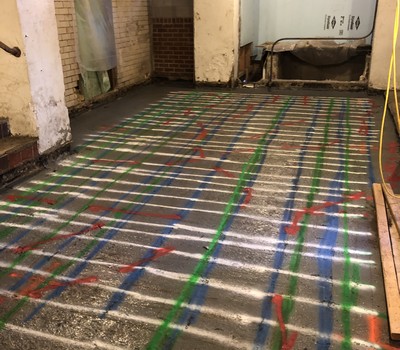Enhancing Job Planning and Execution Through Advanced Concrete Scanning Techniques
In the realm of task planning and foresight, accuracy and execution are crucial elements that can make the difference in between success and problems. Advanced concrete scanning strategies have emerged as an innovative tool set to boost the standards of job monitoring within the construction market.
Benefits of Advanced Concrete Scanning Methods

Improved Precision in Job Analyses
Enhancing task analyses through advanced concrete scanning techniques substantially increases the accuracy and integrity of building and construction evaluations. By using sophisticated scanning modern technologies such as ground-penetrating radar (GPR) and 3D imaging, job groups can now obtain comprehensive insights into the problem of concrete frameworks, recognizing potential flaws or weak points that might not be visible to the nude eye. This boosted degree of accuracy in project analyses allows building specialists to make even more informed choices concerning repair and upkeep techniques, bring about enhanced overall task outcomes.
In addition, the boosted accuracy in task assessments attained through innovative concrete scanning methods helps in lessening the danger of unexpected concerns during the building and construction phase. By proactively identifying covert abnormalities within concrete structures, such as rebar deterioration or voids, task teams can attend to these issues early, avoiding expensive hold-ups and remodel later on in the project lifecycle. Eventually, the boosted accuracy in job assessments assisted in by innovative concrete scanning methods adds to greater performance, cost-effectiveness, and high quality in construction jobs.
Very Early Identification of Structural Obstacles
Early detection of structural obstacles plays an important duty in guaranteeing the stability and safety of concrete structures throughout the building procedure. Recognizing potential problems at a very early stage permits prompt treatment, avoiding costly rework, timetable delays, and security threats. Advanced concrete scanning methods, such as ground-penetrating radar (GPR) and 3D imaging, allow task teams to discover surprise defects, spaces, support format discrepancies, and various other abnormalities that can compromise the structure's security.
By carrying out these strategies during the planning and execution phases, construction professionals can proactively address structural challenges before they escalate into significant troubles. For instance, detecting inadequate concrete cover over support bars early can stop rust and structural weakening in the future - RainierGPR Service Areas. Moreover, recognizing variants in concrete density or thickness can aid maximize material usage and make certain consistent stamina buildings throughout the structure
Inevitably, very early identification of architectural obstacles through advanced concrete scanning not just improves the overall quality and durability of the building and construction yet also adds to a much safer built environment for passengers and individuals.
Improved Precaution in Construction
The application of robust safety protocols is crucial in the construction industry to minimize dangers and secure the wellness of stakeholders and employees. To improve safety measures, building and construction business are increasingly adopting technical developments such as wearable devices that check employees' vital indicators and find prospective health concerns in real-time. By prioritizing safety look here and security with the incorporation of innovative innovations and extensive training programs, building and construction jobs can considerably lower mishaps and develop a safe working setting for all involved.
Streamlining Task Administration Processes
To enhance operational effectiveness and make certain project success in the construction market, a focus on enhancing job management procedures is essential. By carrying out efficient job monitoring processes, building and construction jobs can decrease hold-ups, minimize prices, and enhance total performance.

Final Thought
In final thought, the application of innovative concrete scanning techniques offers various benefits for project planning and execution. These techniques offer improved accuracy in task analyses, very early recognition of structural challenges, enhanced safety measures in building and construction, and structured job management procedures. Including these techniques into project operations can eventually result in much more reliable and effective outcomes in building projects.
Ultimately, the boosted accuracy in project analyses assisted in by sophisticated concrete scanning strategies adds to greater performance, cost-effectiveness, and high quality in construction tasks. RainierGPR Service Areas.
To optimize functional effectiveness and ensure job success in the construction sector, a focus on simplifying project monitoring processes is essential. By applying efficient task management procedures, building and construction jobs can decrease delays, lower costs, and Get More Info enhance total efficiency. By simplifying project monitoring processes with modern technology integration, clear interaction, and data-driven strategies, building tasks can achieve higher efficiency, cost-effectiveness, and successful results.
These techniques supply improved accuracy in job analyses, very early identification of structural difficulties, boosted safety check my source steps in building and construction, and structured project administration processes.
Comments on “RainierGPR Service Areas: Relied On Concrete Scanning Providers in Numerous Areas”